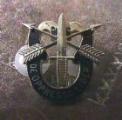In the end, the criminal case against Marine sniper Sgt. Johnny Winnick may boil down to the simplest but yet most confounding question facing troops in Iraq: When can a Marine or soldier use deadly force against a suspected insurgent?
It's a question not even supposed experts can agree on. During the preliminary hearing completed Wednesday, a Marine lieutenant testified that he asked two majors - one a lawyer, the other a battalion executive officer - and got contradictory explanations.
Winnick is charged with manslaughter and assault for killing two Syrians and wounding two others.
Winnick says he opened fire because he believed the men were planting a roadside bomb, but no bomb was found. His superiors say he lacked the "positive identification" and "reasonable certainty'' needed to squeeze the trigger.
But what do those terms mean, particularly for snipers whose job is to kill the enemy from ambush at long range?
Winnick's attorney, Gary Myers, tried to get one of Winnick's fellow snipers to define "reasonable certainty." The young Marine said that, well, reasonable certainty means being reasonably certain.
"This is all words," said an exasperated Myers.
An officer testified that reasonable certainty means being "85% certain." Another said it means being "pretty damn sure."
A Pentagon expert called by Myers disagreed with the "85% certain" rule. He thinks young troops are being given confusing and contradictory guidelines by their superiors. He's written about his concerns in a tome titled
''Combat Self-Defense: How to Save America's Warriors From Risk-Adverse Commanders and Their Lawyers."
















Bookmarks